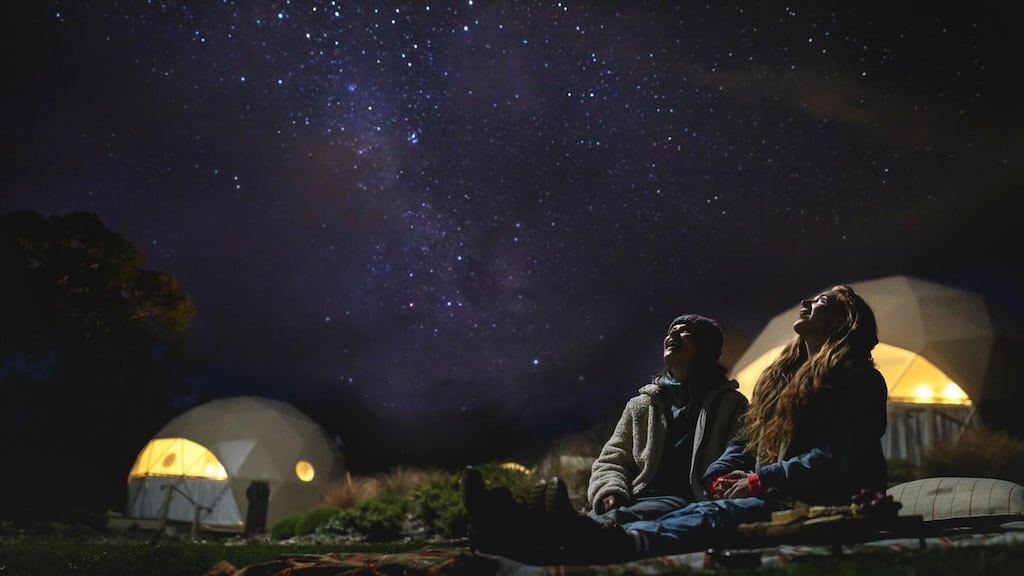Matariki
Celebrating the Māori New Year in Aotearoa New Zealand ✨
Matariki, the Māori name for the Pleiades star cluster, marks the beginning of the Māori New Year in Aotearoa New Zealand. This significant cultural event is celebrated with the first rising of the Matariki star cluster in the dawn sky during late June or early July. It is a time of profound cultural importance, encompassing themes of remembrance, celebration, and renewal. Matariki is a period for people to gather with whānau (family) and friends, reflect on the past year, honor those who have passed, and plan for the future.

Historically, Matariki was a crucial time for Māori, deeply intertwined with agricultural cycles and spiritual practices. The appearance of the stars was observed for forecasting the coming season's harvest, and rituals were performed to ensure fertility and abundance. After a period of decline in the 20th century, the celebration of Matariki has experienced a powerful revival, culminating in its establishment as an official public holiday in New Zealand on June 24, 2022. This recognition underscores the growing appreciation for Māori culture and its integral role in New Zealand's national identity.
The Heart of the Celebration: Core Traditions
The traditions surrounding Matariki are rich and varied, reflecting the deep spiritual and cultural connections Māori have with the natural world and their ancestors. At its core, Matariki is a time for:
Remembrance (Whakamaharatanga): One of the most significant aspects of Matariki is remembering those who have passed away since the last rising of the star cluster. It is believed that the spirits of the dead ascend to become stars, and Matariki provides an opportunity to acknowledge and honor them. This often involves ceremonies where names of the deceased are called out to the stars.
Feasting (Kai Hākari): Matariki is traditionally a time of harvest, and feasting plays a central role in the celebrations. Special foods, often prepared in a hāngi (earth oven), are shared among family and community, symbolizing abundance and gratitude for the land's bounty.
Reflection and Planning (Whakaaro me Whakarite): The new year offers a chance to reflect on the past year's achievements and challenges, and to set intentions and goals for the year ahead. This includes planning for planting, harvesting, and other community activities.
Cultural Performances: Kapa haka (Māori performing arts), waiata (songs), and kōrero (storytelling) are integral to Matariki celebrations, reinforcing cultural identity and passing on knowledge to younger generations.
The nine stars of Matariki each hold specific meanings and influences:
- Matariki (Alcyone): Associated with well-being, health, and reflection.
- Pōhutukawa (Taygeta): Connected to those who have passed on.
- Tupu-ā-nuku (Atlas): Linked to food grown in the ground.
- Tupu-ā-rangi (Pleione): Associated with food from the sky (birds, fruits).
- Waitī (Maia): Connected to fresh water and its resources.
- Waitā (Asterope): Linked to the ocean and its food sources.
- Waipuna-ā-rangi (Merope): Associated with rain.
- Ururangi (Celaeno): Connected to the winds.
- Hiwa-i-te-rangi (Electra): The wishing star, associated with aspirations for the new year.
A Tour of New Zealand's Matariki Celebrations
Matariki is celebrated across New Zealand with a growing number of events and activities, reflecting its status as a national holiday.
🇳🇿 Auckland
Auckland hosts a diverse range of Matariki events, from traditional ceremonies and educational workshops to contemporary art exhibitions and light shows. The city's waterfront often features spectacular light installations, and various cultural institutions offer programs that delve into Māori astronomy and traditions. Community festivals with food stalls, music, and performances are also popular.
🇳🇿 Wellington
In the capital city, Matariki is celebrated with a focus on cultural immersion and learning. Te Papa, New Zealand's national museum, often has special Matariki exhibitions and family-friendly activities. The city also hosts public events such as star-gazing sessions, kapa haka performances, and workshops on traditional Māori crafts. The waterfront and botanical gardens are popular spots for community gatherings.
🇳🇿 Rotorua
Rotorua, a region rich in Māori culture, offers particularly authentic Matariki experiences. Visitors can participate in traditional hāngi feasts, witness powerful kapa haka performances, and learn about Māori customs directly from local iwi (tribes). Educational programs often focus on the significance of the stars and their connection to the land and people.
🇳🇿 Christchurch
Christchurch embraces Matariki with community-led events that often highlight local Māori narratives and traditions. Public spaces are transformed with art installations and lighting displays, and cultural centers host workshops on Māori language, weaving, and carving. The city's parks and gardens are popular venues for family-friendly activities and shared meals.
🇳🇿 Dunedin
Dunedin's Matariki celebrations often incorporate scientific and astronomical elements, given the city's strong academic presence. Public lectures on Māori astronomy, star-gazing events at observatories, and educational programs for schools are common. The city also hosts cultural performances and community gatherings that emphasize the themes of remembrance and renewal.
Conclusion
Matariki is a vibrant and deeply meaningful holiday that has re-emerged as a cornerstone of New Zealand's cultural calendar. It offers a unique opportunity for all New Zealanders to connect with Māori traditions, reflect on their shared history, and look forward to a future guided by the wisdom of the past. As a time for remembrance, celebration, and renewal, Matariki strengthens community bonds and fosters a deeper understanding of the rich cultural tapestry that defines Aotearoa. For more information on Matariki and Māori culture, visit the official Te Papa website.